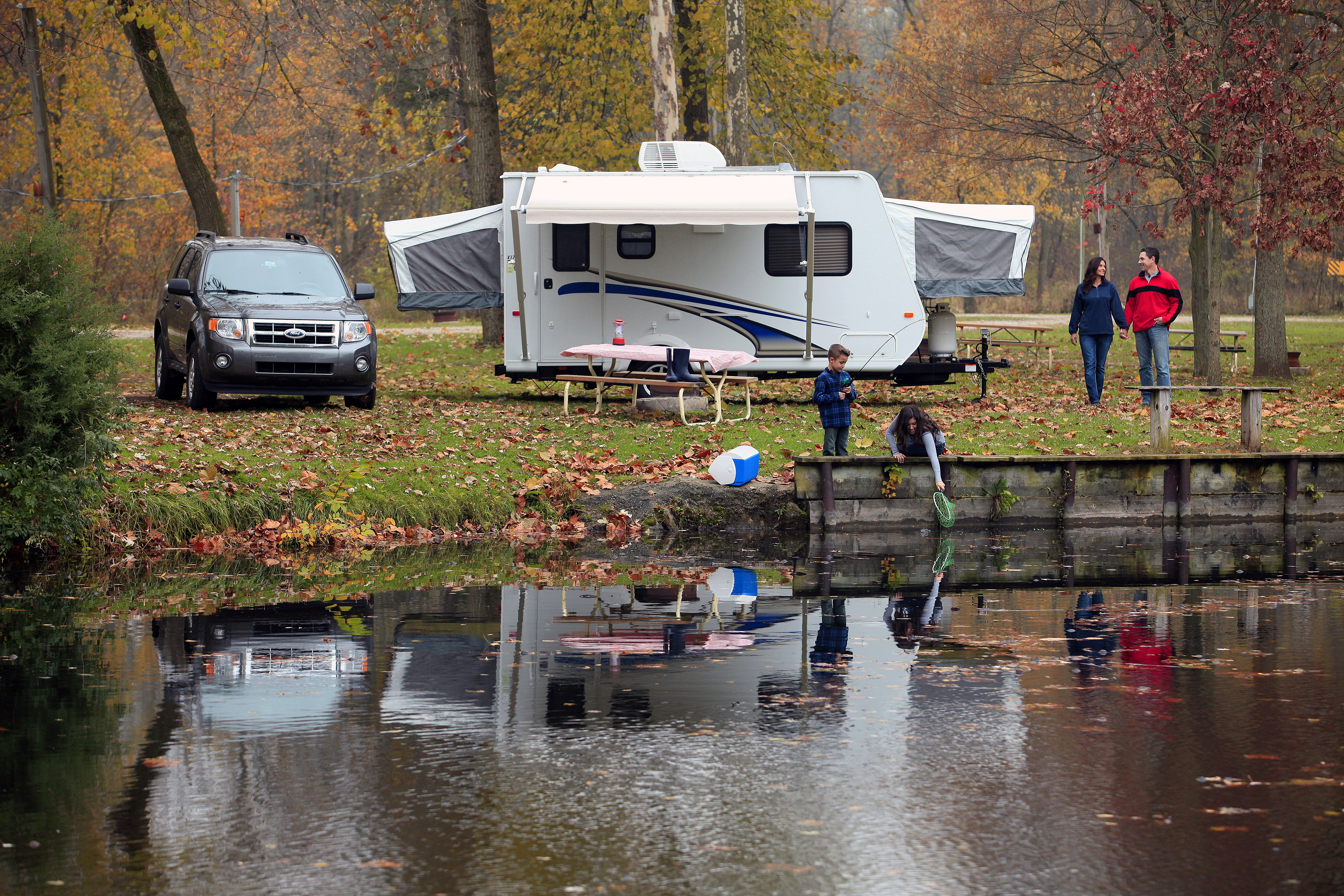Lightweight Towables Bring Variety to Summer Camping

There’s good news this summer for camping fans: you no longer need to have a truck to pull a travel trailer. In many cases, the family car will do just fine.
A new crop of lightweight, eco-friendly travel trailers is appearing in RV showrooms across the U.S., making “trailering” an option for many more Americans. With the weight taken out of them, these new trailers can be towed by sedans, SUVs, minivans, crossover vehicles, and even some compact cars.
“It’s been a growing trend over the last few years,” says Kevin Broom, Director of Media Relations for the Recreation Vehicle Industry Association (RVIA). “Consumers want these lightweight camping trailers that are easy to tow and give them better fuel efficiency.”
Small, pop-up tent trailers and teardrop-shaped mini-campers have always tipped the lower end of the scale. But now consumers can find full-sized conventional travel trailers that weigh as much as two-thirds less than yesterday’s models.
Two factors account for the change, Broom says: the use of space-age materials and advances in electronic technology.
For many years, travel trailers were constructed primarily of steel and wood. Now more and more manufacturers are using composite materials—“polypropylene resin reinforced with continuous bi-directional fibers,” according to one RV maker’s website. These composite materials are lightweight and strong, and can be molded into curvy shapes to make a trailer more aerodynamic.
Other trailers in the new “ultra light” class are made entirely of aluminum. Like plastic composite material, aluminum is lightweight, durable, and will not rust or rot. Both types of construction materials are touted as being “green” because they are recyclable.
Meanwhile, technological advances in electronics have enabled travel trailers to become more compact.
“Ten years ago, to put a 27-inch TV set into an RV, you’d need three linear feet of cabinetry,” says Broom. “Today, manufacturers can simply hang a 27-inch flat panel TV on the wall. Switching to a flat panel TV eliminates 30 to 50 pounds of weight.”
Shrinkage in the size and weight of electronic components means trailer designers can create spacious living areas inside RVs while decreasing their overall size and weight, says Broom. Designers can also throw in all the comforts of home.
“Increasingly, you’re seeing amenities that used to be available only in higher-end RVs filtering into all levels of RVs,” Broom says. These amenities include air conditioning, refrigerators, stereo systems, flat screen TVs and DVD players .
Want to know more about travel trailers you can pull with your car? Broom offers the following tips and resources:
- Do an Internet search for lightweight travel trailer manufacturers to see photos and videos of the latest innovations on the market. Many websites will direct you to the nearest RV dealer offering that brand.
- The RVIA’s consumer website offers a visual primer on the various categories of travel trailers, along with helpful information on affordability, links to campgrounds throughout the land, and where to find RV shows in your area. There’s also a killer campfire recipe for “Regal S’Mores.” www.GoRVing.com
- To learn about the many ways travel trailers have gone “green,” check out www.goevergreenrv.com/page/61/Green
- For a look at RV ownership trends: www.rvia.org/?ESID=trends
- Before investing in a travel trailer, check to make sure your car was designed to be a tow vehicle. To be safe, always check the vehicle manufacturer recommendations and towing weight restrictions.